Physiology & Medicine
- Cancer -
Specific Areas of Study:
-
Using NMT to detect the microenvironment in tumor cells
-
Research on drug resistance in tumor cells
-
Directly detect O2 consumption and H+ fluxes in the conditions of low oxygen and pH
Example:
Paclitaxel-induced H+ influx in human breast tumor tissue
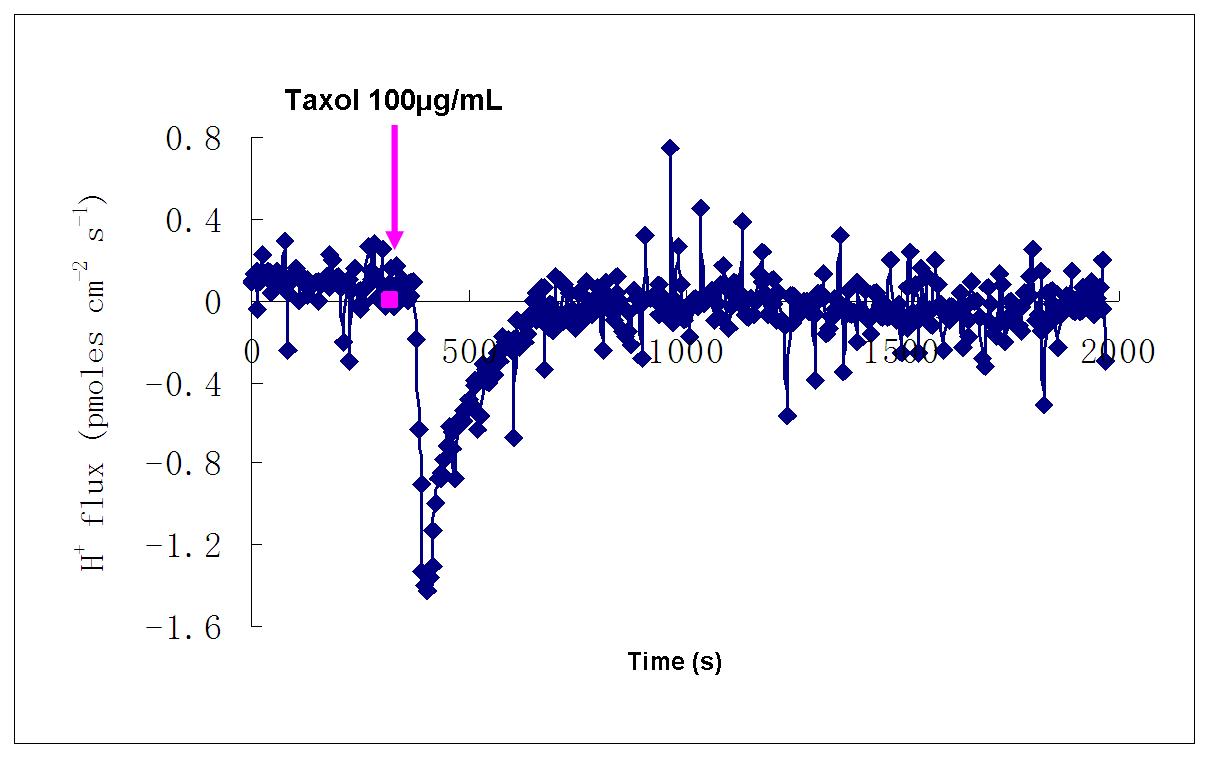
Song J, et al. Acta Biophysica Sinica, 2008, 24: 191-197
(Use with permission)
- Neuroscience -
Neurons are electrically excitable cells which produce relatively large amounts of ATP and consume correspondingly large amounts of O2 to drive the ion pumps that restore intracellular Na+ and Ca2+ levels after synaptic activity and action potentials.
NMT is able to record the O2 consumption and Ca2+ flux in single neurons.
Specific Areas of Study:
-
Signaling in neurons
-
Glutamate toxicity
-
Polarity growth of neuron synapse
Example:
NMT recording of O2 consumption in single neurons.
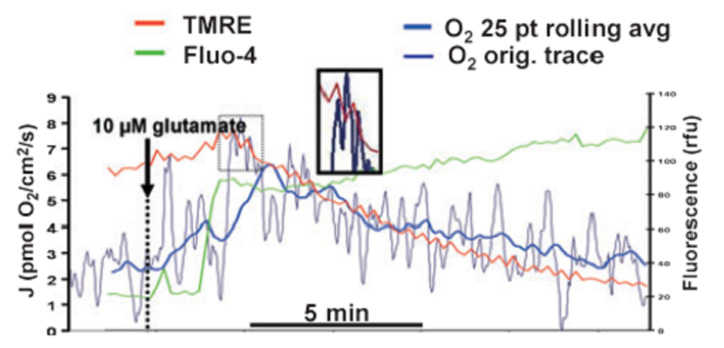
Gleichmann M, et al. J Neurochem, 2009,109: 644-655
(Use with permission)
- Diabetes -
Diabetes is a serious threat to human health. Pathogenesis of diabetes is a very complex physiological regulation process, which involves Ca2+, H+, K+, Na+, O2 and many other ions/molecules. With Non-invasive Micro-test Technique (NMT) scientists are able to study these ions/molecules to reveal the physiological regulation of cells, tissues, organs, and other samples.
Specific Areas of Study:
-
Regulation mechanisms of endocrine processes
-
Induced diabetes and its complications
-
Evaluation of treatments of diabetes drugs
Example:
Maternal diabetes resulting in low oxygen metabolism of the embryo can induce embryonic neural tube defects
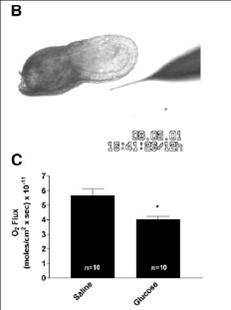
Li R,et al.Am J Physiol Endocrinol Metab, 2005, 289: E591–E599.
(Use with permission)
- Cell Viabilities -
All cells need to maintain a normal physiological state by means of material exchange with their environments, including ionic/molecular exchanges, such as Ca2+, K+ and Cl-, H+ for example. NMT can detect these exchanges in living samples which makes it a straight forward tool to evaluate cell viabilities.
Specific Areas of Study:
-
in vivo detection of the activity of the egg
-
in vivo detection of activity of the embryo
-
in vivo detection of cell fusion signal
Example:
Detection of egg viability via Ca2+ fluxes
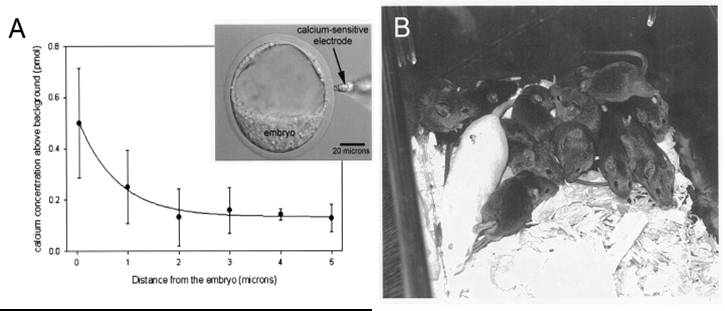
Trimarchi JR, et al. Zygote, 2000:15-24
(Use with permission)
- Pharmacological research and efficacy evaluation -
Ionic/molecular fluxes are real time and quantitative indicators of physiological activities, and thus also become good quantitative indicators for pharmacological effects of drugs. The intuitive data provided by NMT is an easy way to understand these pharmacological effects in a more dynamic pattern.
Specific Areas of Study:
-
Pharmacological mechanisms of specific drugs
-
Mechanisms of drug resistance
-
Evaluation of drugs for personalized treatments
-
Screening drugs
Example:
Doxorubicin induced differences of H+ fluxes between drug-resistant tumor cells and normal cells
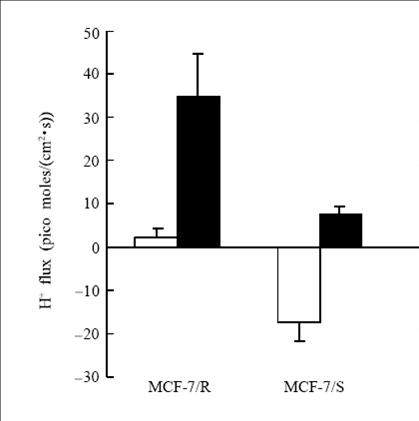
Song J, et al. Acta Biophysica Sinica, 2008, 24: 191-197
(Use with permission)
- Apoptosis and Cell Death -
Ionic/molecular fluxes are one of the fundamental characteristics of life. When cells undergo apoptosis, K+, H+, and other ions/molecules change accordingly. NMT is a perfect tool to study the apoptotic process through the direct measurements of ionic/molecular activities.
Specific Areas of Study:
-
Apoptosis mechanisms
-
Prediction of Cell Death
-
Study the toxicological mechanism of toxicity of the cell
Examples:
(1) K+ effluxes as early indicators of apoptosis in mouse embryonic cells
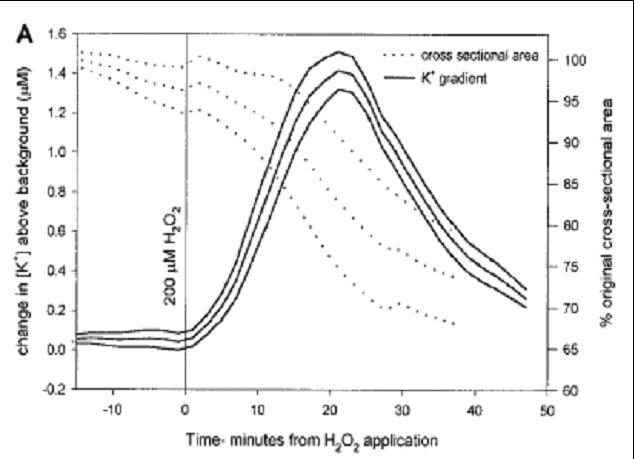
Trimarchi JR, et al. Biology of Reproduction,2000, 63: 851-857.
(Use with permission)
(2) K+ Effluxes with STS treatments in the process of cell senescence
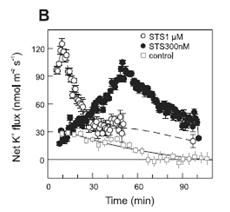
Valencia-Cruz G, et al.Am J Physiol Cell Physiol, 2009, 297: C1544-C1553.
(Use with permission)
- Other Diseases -
Alzheimer’s disease (AD) is the most common form of dementia within the aging population. A major pathological hallmark of AD is the deposition of insoluble extracellular b-amyloid (Ab) plaques. Zn7MT-2A is a new drug which blocks Cu(II)-Ab induced changes in ionic homeostasis and subsequent neurotoxicity of cultured cortical neurons. MT-2A might represent a different therapeutic approach as the metal exchange between MT and Ab leaves the Ab in a Zn-bound, relatively inert form.
Specific Areas of Study:
-
Research on the roles of drugs in Alzheimer’s disease (AD)
-
Find a new mechanism in disease
-
Evaluate new drug efficacy for disease therapies
Example:
Detection of Ca2+ and K+ fluxes of neurons after drug treatment
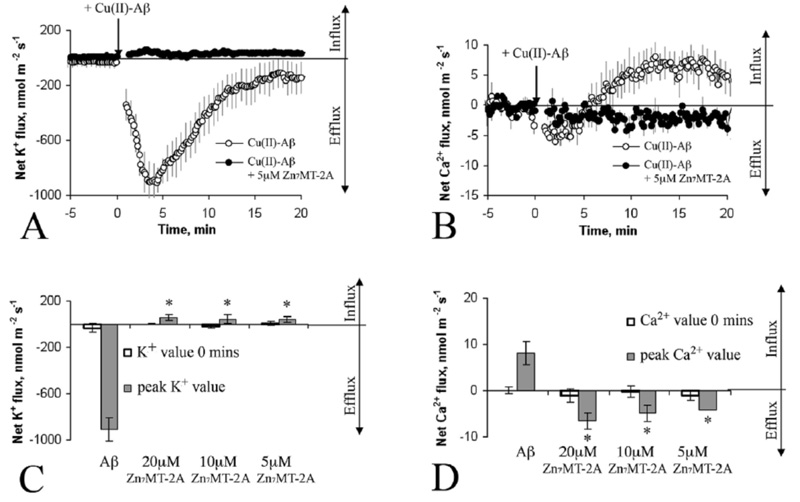
Chung RS et al. (2010). PLoS ONE 5(8): e12030. doi:10.1371/journal.pone.0012030
(Use with permission)
Plant Sciences
- Plant Stress Factors -
Drought, extreme temperatures, chemical pollutants, salinity, pests, disease, and waterlogging are a few adverse factors affecting a plants ability to optimally function. Using NMT, scientists now have the ability to research how plants regulate flux activities of specific ions and molecules.
Specific Areas of Study:
-
Plant response to stress conditions
-
Physiological regulation mechanisms of signal transduction pathways
-
Screening of the stress-resistant varieties of crops
Examples:
(1) NMT reveals the mechanism causing one plant species to have a higher salt resistance than another.
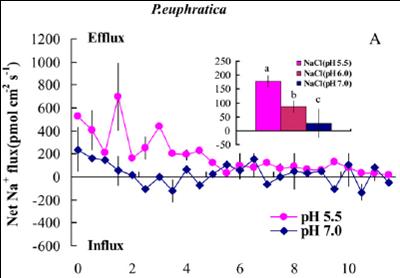
Sun J, et al. Plant Physiology, 2009, 149: 1141-1153
(Use with permission)
(2) NMT directly measured the PM H+-ATPase activities via the H+ flux.
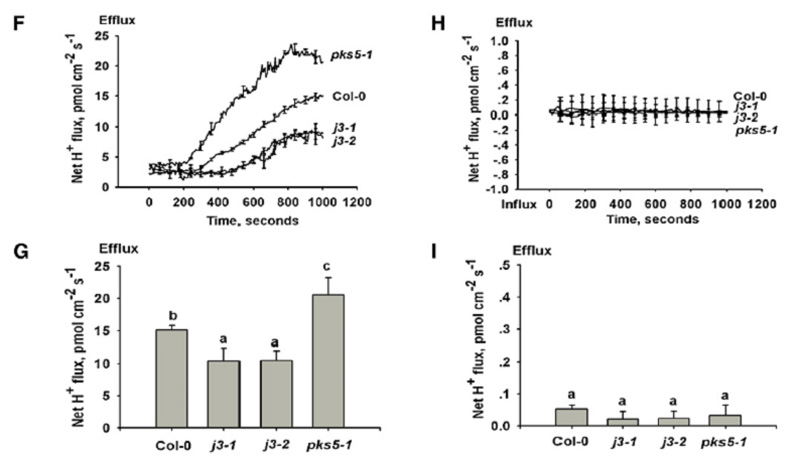
Yang YQ, et al. Plant Cell, 2010, 22: 1313 - 1332.
(Use with permission)
- Photosynthesis and Respiration in Plants -
Cellular homeostasis, and thus cellular health and longevity, rely on the efficient exchange between ions/molecules and the external environment. Factors including leaf morphology, mesophyll cell growth and light intensity all directly impact the capability of photosynthesis.
Plants respire by consuming O2 then producing energy in the form of glucose. This energy is stored by maintaining a proton (H+) gradient across the plasma membrane. Therefore, being able to measure ionic/molecular flux directly, non-invasively, in situ, in vivo, and in real time makes NMT an ideal tool to study both photosynthesis and respiration in plants.
Specific Areas of Study:
-
Mechanism of Photosynthesis
-
Mechanism of Respiration in Plants
-
Screening of Plants with High Photosynthesis Efficiency
Examples:
(1) Using NMT, extracellular oxygen and proton fluxes from Spirogyra grevilleana were measured. When the cell was illuminated, oxygen showed a net efflux and protons showed a net influx . These measurements provided a new insight in our understanding of basic cellular physiology in plant photosynthesis.
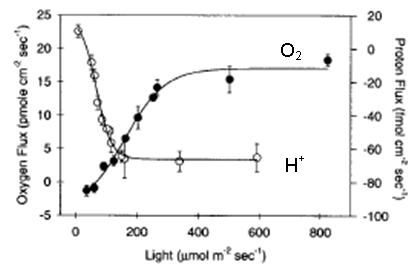
PorterfieldDM and Smith PJS. Protoplasma, 2000, 212: 80-88
(Use with permission)
(2) Using NMT, extracellular oxygen and proton fluxes from pollen tube were measured. O2 influxes and H+ effluxes were detected in the region of condensed mitochondria.
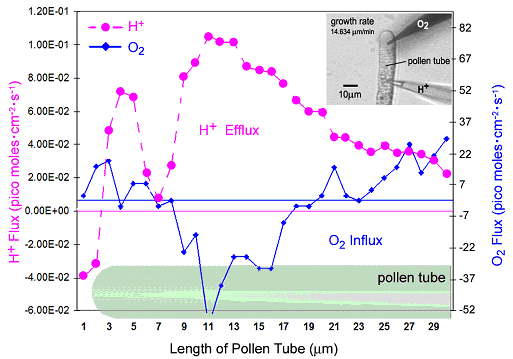
Xu Y, et al. Journal of integrative plant biology, 2006, 48: 823-831.
(Use with permission)
- Development and its Regulations -
Plant growth and development is a complex process, accompanied by active metabolism and exchanges of various substances with the outside world. It starts from seed germination, root, leaf differentiations, growth and maturation, flowering, reproduction, and finally aging and death. Therefore, detection of fluxes of H+, Ca2+, K+, Cl-, Mg2 +, and O2 provides an indispensable way to understand the plant growth and development and how they are regulated.
Specific Areas of Study:
-
Study the mechanisms of regulation of plant development
-
Study the roles of auxin, gibberellin, abscisic acid, ethylene and other plant hormones
-
Study stress phenomena in plant development
-
Signal transduction
-
Looking for mechanisms to promote the rapid growth and development of crops
Examples:
(1) Ca2+ influxes were affected by NO stimulator or suppressor
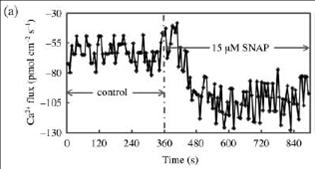
Wang Yuhua, et al. New Phytologist, 2009, 182: 851-862.
(Use with permission)
(2) Cl- fluxes are correlated with pollen tube growth
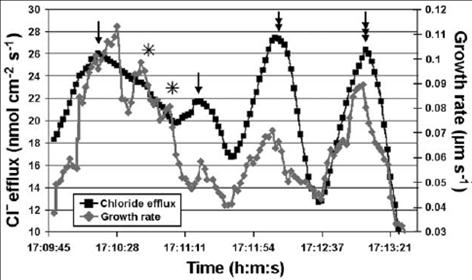
Laura Zonia, et al. Plant Cell, 2002, 14: 2233-2249
(Use with permission)
- Microbial Interactions -
To study the interactions between microbes and plants, microbes and microbes, and microbes and other organisms it is crucial to understand symbiotic, antagonistic and parasitic relationships. Since most of the interactions are mediated by activities of various ions and molecules, NMT, which can non-invasively detect minute dynamic fluxes of these ions/molecules in real time, is an innovative tool to uncover these interaction processes.
Specific Areas of Study:
-
Mechanism of plant and microbial interactions
-
Plant signal transduction in fungal infection process
-
Plant mycorrhizal study
-
Plant nitrogen fixation
-
Allelopathy
-
Fungal development
Examples:
(1) Characteristics of H+ fluxes during fungal development, and are subject to the regulation of nutrient absorption
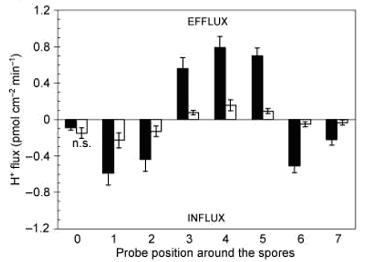
Ramos AC,et al. New Phytologist, 2008, 178: 177-188.
(Use with permission)
(2) Ca2+effluxes present after infected by P. syringae pv syringae
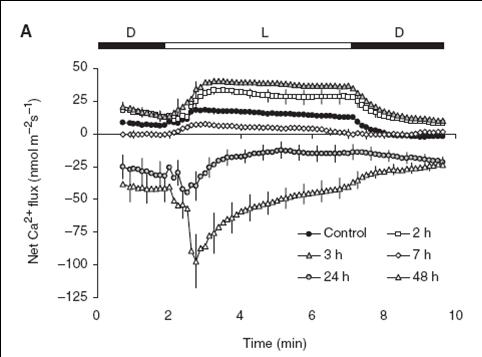
Nemchinov LG, et al. Plant Cell and Physiology, 2008, 49: 40-46.
(Use with permission)
- Signal Transductions -
Mycorrhizal is a typical host plant - fungal symbiotic interactions, plant nutrient uptake and growth are accelerated by fungal infection, which is also dependent on the pH.
Example:
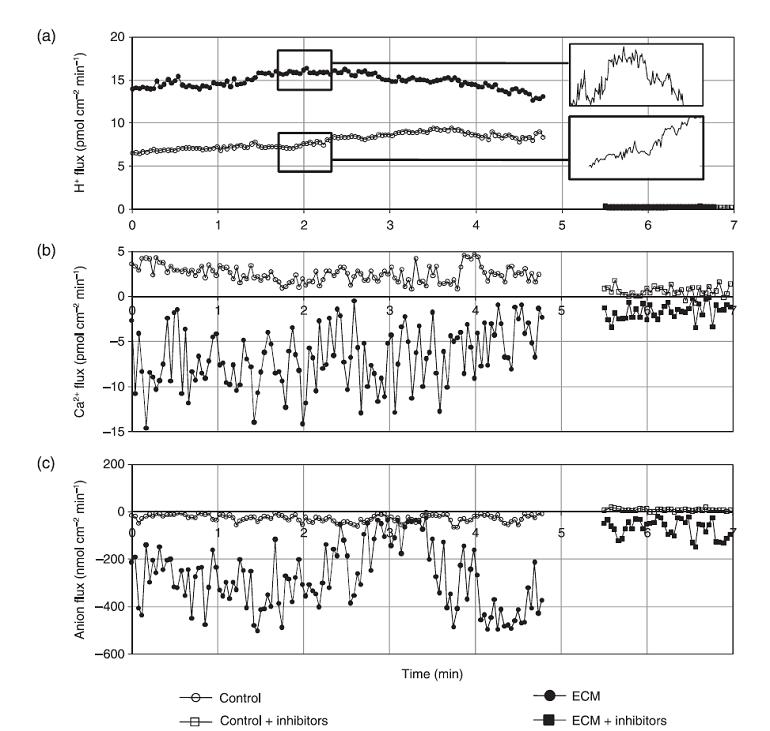
Ramos AC, et al. New Phytologist, 2009, 181: 448-462.
(Use with permission)
- Plant Nutrition -
In order to survive and grow, plants need a large number of Nitrogen, Phosphorous, Potassium, and other nutrients from the environment. These nutrients are often in the forms of NH4+, of NO3-, K,+ influxes near the surface of the roots. Meanwhile, fluxes of other ions and/or molecules, such as Ca2 +, H+, and O2 are also important to regulate the nutrient's absorption process.
NMT is a vital tool to study plant nutrition absorption and regulation mechanisms because not only can it measure NH4+, NO3-, of K+, Ca2 + , O2, and H+ but it also provides a way to study them in-situ, in vivo, in real time, and theoretically no restrictions to the size of your samples.
Specific Areas of Study:
-
Mechanism of crop nutrient absorption
-
Looking for substances that can regulate nutrient absorption
-
Screening crops
-
Evaluation of the effect of fertilizer
-
Develop guidance of rational fertilization process
Examples:
(1) Periodical oscillations of H+, K+ and Ca2+ absorptions have been found in the roots of wheat
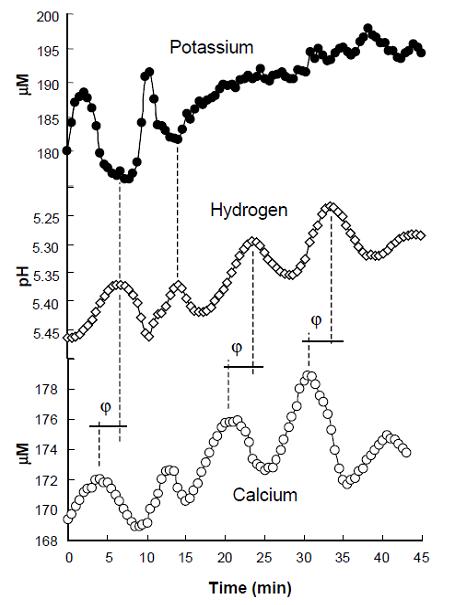
ShabalaS, et al. Functional Plant Biology, 2002, 29, 595–605.
(Use with permission)
(2) NH4+ and NO3- absorptions are regulated by pH
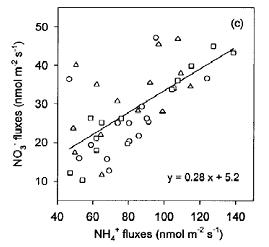
Garnett TP, et al. Plant and Soil, 2001, 236: 55–62.
(Use with permission)
(3) Different effects on NO3- and NH4+absorptions by increase of external on NO3- and NH4+
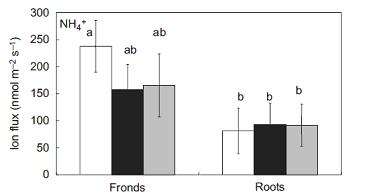
Fang YY, et al. Annals of Botany, 2007, 99: 365–370.
(Use with permission)
Environmental Science
- Bio-Monitoring of Environmental Pollutions -
Oxygen and Hydrogen activities are essential to all organisms, while aquatic organisms seem to be more sensitive than others in response to environmental changes. They are especially sensitive to pollutants making O2 and H+ fluxes good and reliable indicators of environmental pollutions.
It can be applied to water quality assessment and biological early warning of environmental pollutions.
Specific Areas of Study:
-
Water pollution detection
-
Biological early warning
-
Water Quality Assessment
-
Detection of heavy metal pollution
Example:
O2 flux changes of fathead embryo in response to different pollutants
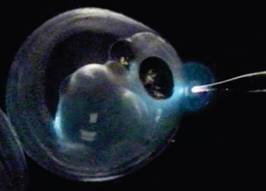
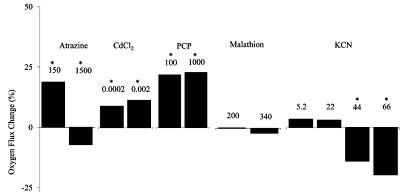
Sanchez BC, et al. Environ. Sci. Technol. 2008, 42: 7010-7017.
(Use with permission)
- Heavy metal pollution and treatments -
Some organisms, especially some plants, have developed a mechanism for heavy metal tolerance, by which heavy metals (such as of Cd2+) enrich their organelles, which provides the possibility for the bioremediation of heavy metal pollution.
Most of the animals, however, are very sensitive to the presence of heavy metals, which cause significant changes to their respiration processes. Therefore, NMT, which can directly measure Cd2+, H+, and O2 with living samples, is an ideal tool to study the mechanisms of heavy metal absorption and regulations.
Specific Areas of Study:
-
Heavy metal pollution monitoring
-
Heavy metal enrichment mechanism
-
Heavy metal pollution control
-
Plant heavy metal tolerance mechanism
-
Screening of heavy metals is highly efficient in order to enrich plant varieties
Examples:
(1) The intestinal and Malpighi tube play an important role in the chironomid larvae Cd2+ transport and absorption process
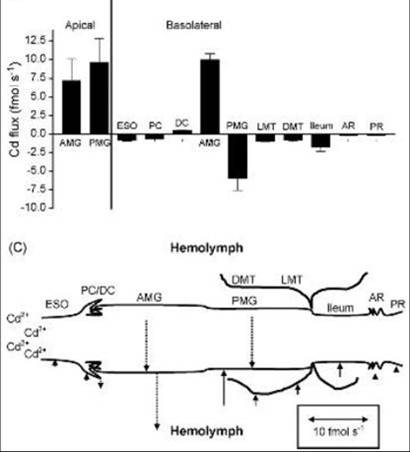
Leonard EM,et al. Aquatic Toxicology. 2009, 92: 179-186.
(Use with permission)
(2) Pattern of Cd2+ enrichment in wheat roots
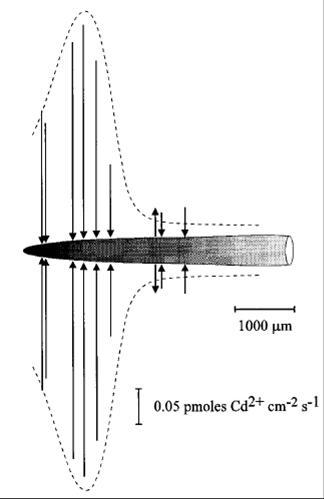
Piñeros MA,et al. Plant Physiology. 1998, 116:1393–1401.
(Use with permission)
- Bio-Green-Energy -
NMT is sensitive enough to measure oxygen fluxes around single cells. In the following example, Porterfield and Smith et al. have characterized oxygen and proton fluxes from a single cell of the filamentous green alga Spirogyra gre illeana (Hass.).
Results showed that oxygen had a net efflux and protons showed a net influx when the cell was illuminated. These photosynthesis-dependent fluxes were found to be spatially associated with the chloroplasts and were sensitive to treatment with dichlorophenyl dimethylurea. In the dark the directions of oxygen and proton fluxes were reversed. This oxygen influx was associated with mitochondrial respiration and was reduced by 78% when the cells were treated with 0.5 mM KCN. The residual cyanide-resistant respiration was inhibited by the application of 5 mM salicylhydroxamic acid, an inhibitor of the alternative oxidase. Similarly the cytochrome pathway was also inhibited by the presence of 20 uM NO, while the cyanide-resistant alternative oxidase was not.
These results demonstrate the use of the NMT system to measure and characterize metabolic fluxes at a level of sensitivity that allows for subcellular resolution.
Example:
Single-cell, real-time measurements of extracellular oxygen and proton fluxes from Spirogyra grevilleana

Porterfield DM and Smith PJS.Protoplasma, 2000, 212: 80-88
Microbiology
- Bio-waste Treatment -
The major aim of wastewater treatment is to remove as much of the suspended solids as possible before the remaining water, called effluent, is discharged back to the environment. As solid material decays, it uses up oxygen, which is needed by the plants and animals living in the water. "Primary treatment" removes nitrate, ammonium, heavy metals and other contaminants. Using NMT we were able to see the effect of detoxicity and denitrification by the NO3-, NH4+, and O2 fluxes.
Specific Areas of Study:
-
Detect ability of uptake to nitrate and ammonium in biofilm
-
Evaluate the results of waste water treatment
-
Screen and find bacteria or microbe for waste treatment
-
Ensure safety standards are met
Example:
Non-invasive detect biofilm analyte flux
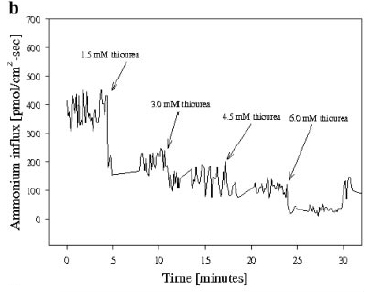
McLamore ES, et al. Biotechnology and Bioengineering, 2009, 102(3):791-799.
- Microbiology & Food Safety -
The ability of certain microbes or yeasts to grow at low ambient pH in the presence of lipophilic weak-acid preservatives inflicts heavy losses on the food and beverage industries. The plasma membrane H+-extruding H+-ATPase is firmly implicated in the ability of S. cerevisiae to resist intracellular acidification caused by weak organic acids. The effect of long-term benzoic acid exposure on cellular K+ of both Z. bailii and S. cerevisiae has been examined as a test of the importance of K+ uptake in adaptive growth.
Specific Areas of Study:
-
Detect acidification by H+ flux and pH in microbes
-
Rapidly detect key changes and targets of microbes in food
Example:
Plasma membrane H+ and K+ transporters are involved in the weak-acid preservative response of disparate food spoilage yeasts
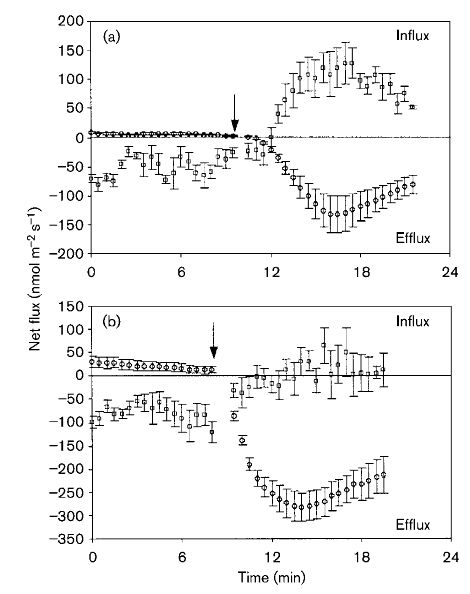
Macpherson N, et al. Microbiology. 2005, 151(6): 1995-2003.
(Use with permission)



























